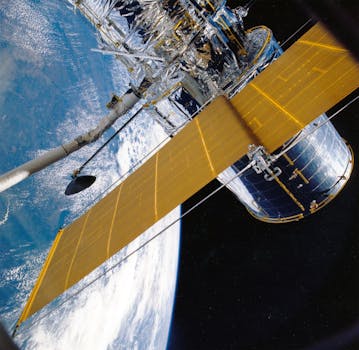
The Future of Satellites: Revolutionizing Global Connectivity
The future of satellites is rapidly evolving, with advancements in space technology and increasing demand for global connectivity. As we continue to rely on satellites for communication, navigation, and remote sensing, the industry is poised for significant growth and innovation. In this article, we will explore the latest developments and trends in the satellite industry, and what they mean for the future of global connectivity.
Advancements in Space Technology
One of the key drivers of the satellite industry is advancements in space technology. Recent breakthroughs in areas such as propulsion systems, materials science, and satellite design have enabled the development of more efficient, cost-effective, and powerful satellites. For example, the use of electric propulsion systems has increased the lifespan of satellites, while advances in materials science have enabled the creation of lighter, more durable satellite components.
Another significant development in space technology is the rise of small satellites, also known as cubesats. These tiny satellites, which are typically around the size of a shoebox, have revolutionized the industry by providing a low-cost, flexible, and scalable solution for a wide range of applications, from Earth observation to communication. The use of small satellites has also enabled the development of constellations, which are networks of satellites that work together to provide global coverage and connectivity.
Increasing Demand for Global Connectivity
The demand for global connectivity is driving the growth of the satellite industry, with an increasing need for high-speed, low-latency communication services. The proliferation of mobile devices, the rise of the Internet of Things (IoT), and the growing demand for online services such as video streaming and social media have all contributed to the need for more bandwidth and connectivity. Satellites are playing a critical role in meeting this demand, providing connectivity to remote and underserved communities, and enabling the creation of new services and applications.
One of the most significant trends in the satellite industry is the development of satellite constellations, which are designed to provide global coverage and connectivity. Companies such as SpaceX, OneWeb, and Amazon are investing heavily in the development of these constellations, which will provide high-speed, low-latency communication services to a wide range of users, from consumers to enterprises. These constellations will also enable the creation of new services and applications, such as satellite-based 5G networks and IoT platforms.
Challenges and Opportunities
While the future of satellites is promising, there are also significant challenges to be addressed. One of the most pressing concerns is the issue of space debris, which is becoming an increasingly significant problem as the number of satellites in orbit grows. Space debris can pose a significant risk to operational satellites, and can also contribute to the growing problem of orbital congestion.
Another challenge facing the satellite industry is the need for more efficient and sustainable launch systems. The current launch systems are often expensive and inefficient, and can have a significant environmental impact. The development of reusable launch vehicles, such as those being developed by SpaceX and Blue Origin, is helping to address this challenge, and is enabling the satellite industry to become more sustainable and environmentally friendly.
Despite these challenges, the future of satellites is full of opportunities. The development of new technologies, such as quantum computing and artificial intelligence, is enabling the creation of new services and applications, such as satellite-based data analytics and AI-powered satellite operations. The growth of the satellite industry is also creating new opportunities for investment, innovation, and job creation, and is helping to drive economic growth and development.
Conclusion
In conclusion, the future of satellites is rapidly evolving, with advancements in space technology and increasing demand for global connectivity. The development of satellite constellations, small satellites, and reusable launch vehicles is enabling the creation of new services and applications, and is helping to drive economic growth and development. While there are challenges to be addressed, such as space debris and orbital congestion, the opportunities presented by the satellite industry are significant, and will continue to shape the future of global connectivity.




